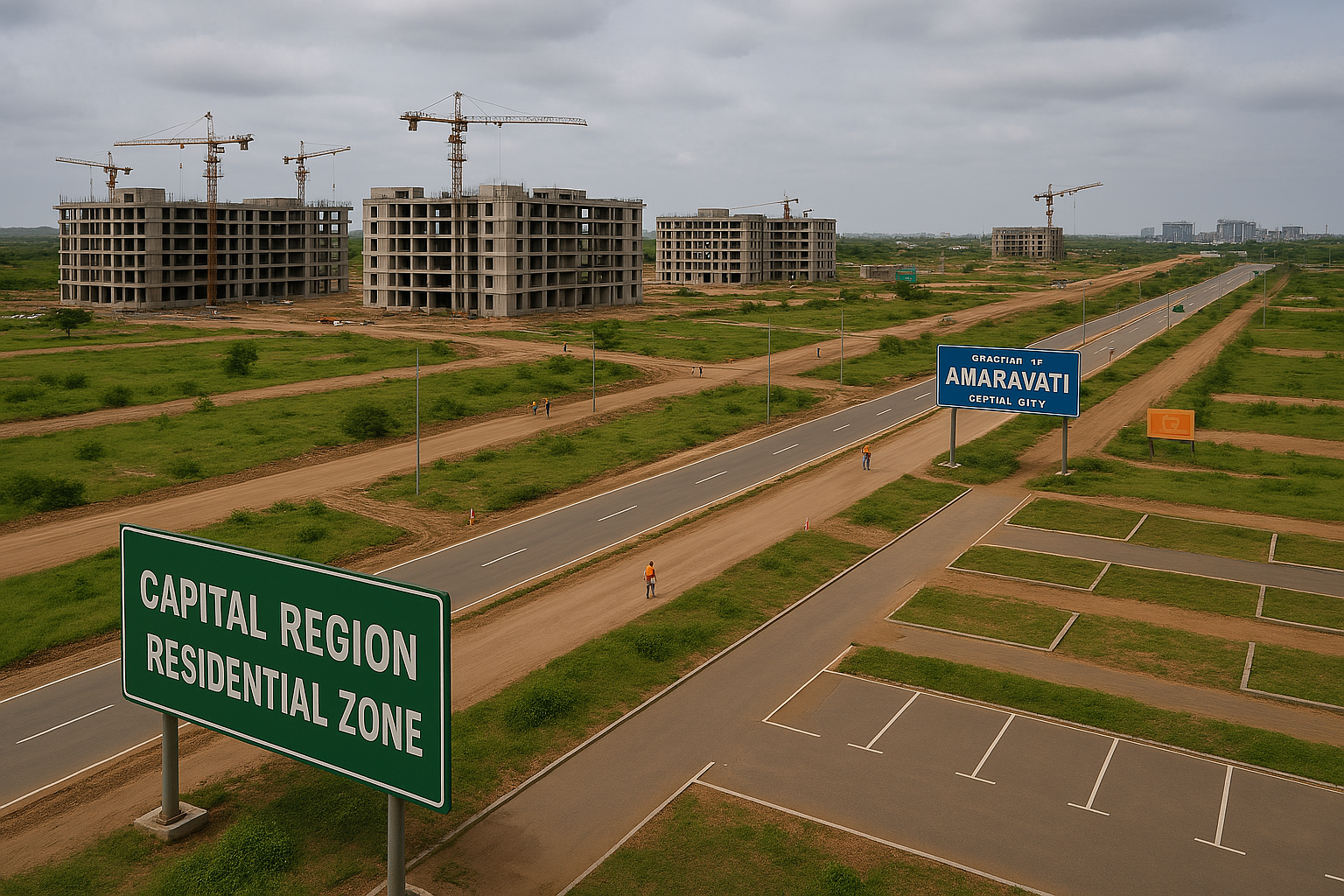Amaravati’s Capital Push Sparks Real Estate Revival

Amaravati, Andhra Pradesh’s visionary capital city, is back in the spotlight. After years of political back-and-forth and stalled development, recent government signals reaffirming Amaravati as the official capital have sparked a renewed wave of interest in its real estate sector. This revival could not only transform the property landscape of Andhra Pradesh but may also begin to impact the real estate dynamics in Hyderabad, which had become the dominant choice for investors during Amaravati’s uncertainty.
A Turnaround After Years of Dormancy
The city of Amaravati, which once promised to be a world-class capital with futuristic infrastructure and green architecture, faced severe setbacks after the change in government in 2019. Real estate activity plummeted, land prices stagnated, and thousands of investors were left in limbo.
However, in early 2025, the government’s clear stance on reviving Amaravati as the legislative and administrative capital has reignited investor confidence. Landowners, developers, and end-users are now showing renewed enthusiasm toward the capital region development authority (CRDA) zones.
Key Indicators of the Revival
-
Rise in Land Inquiries: Especially in areas like Tullur, Mangalagiri, and Thullur-Krishna River belt.
-
Reactivation of Projects: Several shelved residential and commercial projects are being reconsidered.
-
Investor Movement: NRIs and institutional investors from Vijayawada, Guntur, and Hyderabad are revisiting their capital region portfolios.
-
Government Infrastructure Push: Resumption of roads, water pipelines, and administrative blocks construction has begun to reflect on the ground.
Impact on Hyderabad’s Real Estate Market
While Hyderabad remains a strong, established real estate powerhouse, Amaravati’s revival could slowly rebalance investor focus — especially among:
-
Mid-segment investors looking for land or affordable plots
-
Commercial developers eyeing government-related infrastructure
-
NRIs who had diverted their interest from Amaravati to Hyderabad since 2019
This shift won’t cause a downturn in Hyderabad, but it might slow down investment-led real estate activity, particularly in regions like Gachibowli, Puppalaguda, and Tellapur, where speculative buying had been high.
What This Means for Real Estate Stakeholders
For Homebuyers:
Amaravati’s land prices are still below their 2018 peak, making this an ideal entry point for long-term buyers.
For Investors:
Those who had exited the market earlier are considering re-entry, hoping to benefit from the early revival phase.
For Developers:
New partnerships are forming to restart construction, especially for integrated townships and plotted development projects.
Challenges Still Ahead
-
Legal and policy clarity on land pooling and returnable plots
-
Infrastructure completion to bring livability and employment
-
Public perception and long-term government consistency in commitment
Stakeholders are cautiously optimistic, waiting for consistent action over the next 6 to 12 months.
Conclusion
Amaravati’s comeback story isn’t just about real estate — it’s about renewed aspirations, regional growth, and investor faith in planned urban development. With the government backing the capital’s development, Amaravati could soon reclaim its spot as South India’s next big real estate destination — giving Hyderabad some healthy competition.
- Lakshadweep
- Delhi
- Puducherry
- PROPIINN
- Arunchal Pradesh
- Assam
- Bihar
- Chhattisgarh
- Goa
- Gujarat
- Haryana
- Himachal Pradesh
- Jharkhand
- Karnataka
- Kerala
- Maharashtra
- Madhya Pradesh
- Manipur
- Meghalaya
- Mizoram
- Nagaland
- Odisha
- Punjab
- Rajasthan
- Sikkim
- Tamil Nadu
- Tripura
- Telangana | Andhra pradesh
- Pulse
- Uttar Pradesh
- Uttarakhand
- West Bengal
- Andaman and Nicobar Islands
- Chandigarh
- Dadra and Nagar Haveli and Daman and Diu
- Jammu and Kashmir
- Ladakh



